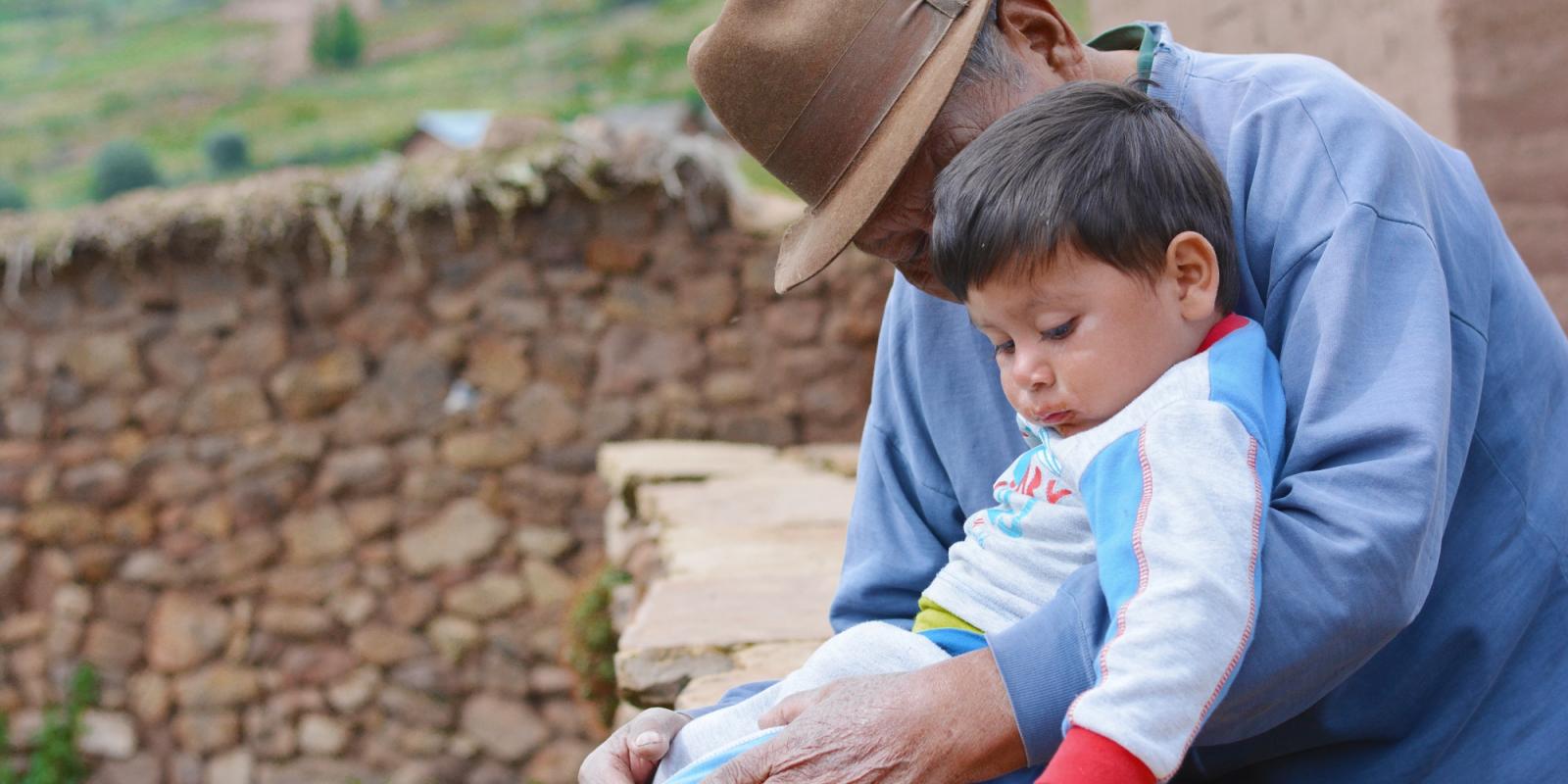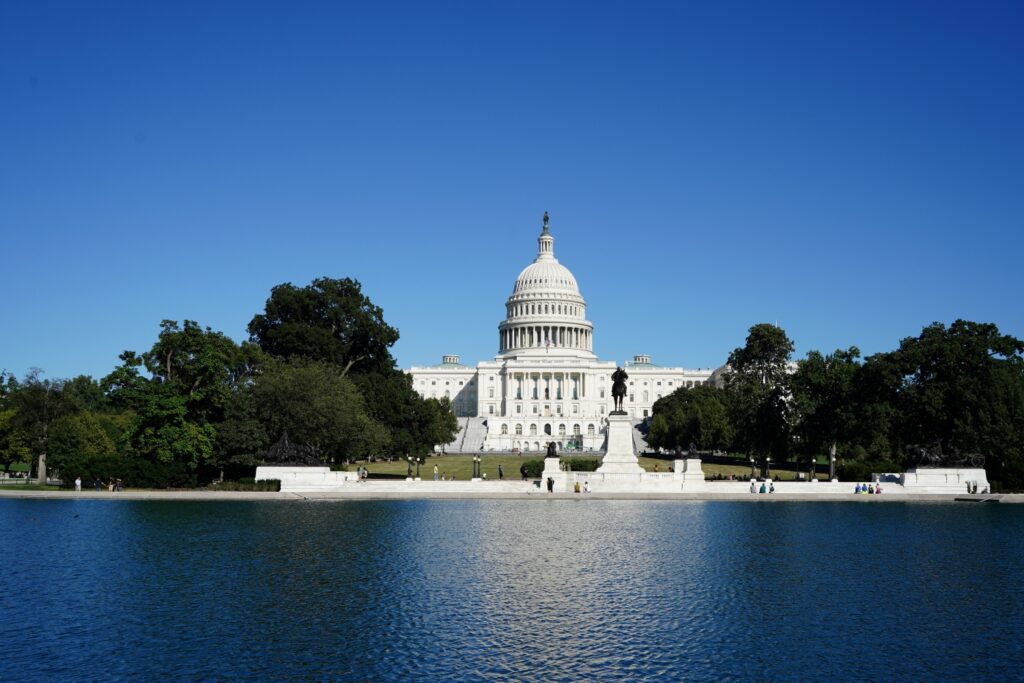Abstract
In many BIPOC families, children spend significant periods under their grandparents’ or other relatives’ care. Minor guardianship can be an important legal mechanism, giving caregivers the legal status needed to serve as a substitute parent and provide stability for grandchildren, while avoiding the risks and uncertainty of the public child protection system. Too few families use this tool because state guardianship laws include outdated provisions and court processes are challenging to navigate, especially for caregivers with no access to legal help. State policymakers should examine and reform minor guardianship laws to ensure they serve the needs of children, families, and courts.
Key Words
minor guardianship, BIPOC grandparents, relatives, stability, caregivers, legal help
As contributors to this issue describe, a substantial number of BIPOC children are raised primarily by a non-parent relative caregiver, most commonly a grandparent. The Annie E. Casey Foundation (2023) found that, as of 2021, 3.7 million children in the U.S. (about 5% of all U.S. children) lived in households without parents as the primary caregivers.
Children commonly come to live with relative caregivers when a parent is facing a crisis due to substance use, homelessness, mental or other illness, or incarceration (Duques, 2005; Gleeson et al., 2009). Grandparents are the go-to resource for many families where a parent cannot provide care, and the practice of grandparents raising children is particularly prevalent in families of color (Berrick & Hernandez, 2016; Pittman, 2023). Studies have identified reasons for this disproportionate reliance upon relative caregiving in BIPOC families, including criminal justice policies and mass incarceration, the HIV/AIDS and crack cocaine epidemics, poverty, and state child welfare interventions (Pittman, 2023).
Relative caregiving arrangements may be brief, depending on the family’s needs, but research indicates that children under a grandparent’s care remain for longer periods of time than those living with other relatives (Government Accountability Office, 2020; Radel et al., 2016). Many of these non-parent caregivers lack the legal authority they need to meet the child’s needs. The legal relationship between grandparents and the children in their care can fall anywhere on a spectrum of informal (i.e., no legal documentation of caregiver status) to formal (e.g., legal adoption) arrangements (Pittman, 2023).
Minor guardianship, also known as probate guardianship, falls somewhere in the middle. It confers many of the rights and responsibilities of parents, such as the ability to enroll a child in school and obtain medical care, and it assigns the guardian the duty to provide a home and care for the child (Hardin, 1983). Once the relative is appointed as guardian, they generally retain these rights and responsibilities unless the court terminates or modifies the order (Smith, 2019).
Guardianship laws have their origins in colonial law, created at a time when the children for whom courts appointed guardians were predominantly legal orphans, “incapacitated” by their youth, who had inherited property (Taylor, 1935). For this reason, these laws fall under probate law—laws about property transfer upon a person’s death. Guardianship proceedings often take place in probate courts rather than family courts (Smith, 2019).
Today, however, very few children are orphaned, and guardianships are rarely needed to ensure appropriate management of a child’s property. Instead, the laws are mostly used to address a child’s need for care when a living parent is in a crisis or context that limits their ability—at least temporarily—to provide such care (Huntington, 2014; Smith, 2019).
The use of guardianships for this purpose originated in observations and proposals published in the 20th century by social work scholars (Leashore, 1984; Taylor, 1966; Weissman, 1949). As the child welfare and foster care systems expanded, these scholars urged consideration of guardianships as an alternative to foster care and adoption to preserve familial ties while ensuring care and stability for the child (Smith, 2019). The shift to using guardianship as an alternative to foster care was also facilitated by public child welfare agencies aiming to reduce their caseloads. Through a practice sometimes referred to as “kinship diversion,” families were encouraged or instructed to pursue minor guardianship (Office of the Child Advocate, 2009; Smith, 2019).
Guardianship Presents a Trade-off for BIPOC Families
Today, two distinct legal mechanisms—public child welfare (or dependency) and “private” guardianship—are used in similar contexts and based on similar concerns. However, these can lead to vastly different results for families in the short and long term. One set of disparities reflects the different historical origins of minor guardianship from laws governing dependency proceedings. In theory, federal and state laws governing public child welfare make reunifying parents and children a primary goal and responsibility of child protective services (CPS) agencies (McGowen, 2005).
Through “kinship diversion,” families were encouraged or instructed to pursue minor guardianship.
In discharging those responsibilities, CPS agencies may provide the family services and financial support (Hardin, 1983; Huntington, 2014; Weisz & McCormick, 2003). In recent years, such agencies have recognized that children in state custody should, whenever possible, be placed with relatives rather than foster families—a practice known as “kinship placement”—to minimize trauma and facilitate reunification with their parents (Testa & Miller, 2005).
Minor guardianship laws have a different purpose: to authorize a person to act as a child’s substitute parent. Such aim reflects guardianship’s colonial origins as a legal mechanism, based in probate laws and courts, to appoint a fiduciary to oversee the property and person of an individual regarded as being incapacitated. Such arrangements needed to be comprehensive and long-term; there was no expectation that the arrangement would be temporary, or that the child would be reunified with the parent. The antiquated provisions of many states’ minor guardianship laws fail to equip courts with the authority and guidance necessary to effectively address the interests of children, their parents, and their relative caregivers under today’s prevailing conditions (Pew Charitable Trusts, 2023; Smith, 2019).
This disparity may lead one to conclude that guardianship is a disadvantageous option for families when compared with the public child welfare system. However, when we consider the perspective of the families receiving the most scrutiny from public child welfare agencies, particularly BIPOC families, we see the alternatives in terms of a very different sense of risks and benefits.
Families at the margins rather than centers of power are understandably wary of the “help” public child welfare agencies provide. While there are deep roots for kinship care practices in many cultures and societies, interfamilial care has had a particularly important role in African American communities. In these and other communities of color, the self-sufficient “nuclear family” has never been set as the ideal for a household or childrearing configuration (Berrick & Hernandez, 2016; Coupet, 2010; Roberts, 2002). Challenges presented to families in these communities by economic, social, and political pressures often obliged them to look within their kinship networks—a “rich system of interdependence,” as Coupet (2010) called it—for assistance and support (Gleeson et al., 2009; Leashore, 1984).
And in fact, for generations families in these communities have employed their own child protection systems. They have done so in part to avoid any engagement with the government because the risks are multifold, substantial, and pose real threats to their survival as families. As noted and documented by many scholars, the broad definitions of “abuse,” “neglect,” and parental “unfitness” employed in the child welfare system allow CPS workers to apply them to family arrangements that fall outside tacit social norms often shaped by biased assumptions about race, culture, religion, gender, disability, and class (Guggenheim, 2000; Huntington, 2014). Such biases can be reflected in how agencies target families for disruption and dissolution rather than support and reunification (Huntington, 2014; Roberts, 2002).
For some BIPOC communities, the bar for government intervention has been shockingly low. The experience of Native American families that led in 1978 to the enactment of the Indian Child Welfare Act (ICWA) is perhaps the starkest and most tragic example of the effect of these biased social norms. Thousands of Indigenous children were removed from their families based upon the assumption that they needed to be “rescued” from conditions seen as inferior and exposed to the majority culture to ensure they would be able to assimilate and succeed in the majority society (Roberts, 2002). The widespread practice was halted and remains in check only by Congress’s enactment of ICWA (1978).
More recently, figures on the racial makeup of the families from whom children have been removed by the state reveal serious disparities and inequities, with African American families as the overwhelming majority of CPS caseloads in urban communities (Huntington, 2014; Roberts, 2002). Roberts (2002) described “the foster care system in the nation’s cities” as “an apartheid institution” (pp. 6-10). The nebulous conceptualization of parental “unfitness” leaves much to the discretion of caseworkers. Actions and conduct that would be considered unremarkable in middle- and upper-class White families—such as alcohol and drug use—and that fall far short of physical abuse or abandonment, serve as grounds for removal of the children in poor, urban families (Huntington, 2014; Roberts, 2012).
Under this approach to parental “unfitness,” other relatives in the family may be considered not as resources for alternative care but rather as part of the problem from which children need to be removed—the “apple doesn’t fall far from the tree” assumption. As was true of immigrant families in urban settings at the turn of the century and of Native American tribal members for decades after that, marginalized groups have always been particularly vulnerable to intervention (Huntington, 2014). Instead of permitting children in such communities to be cared for by other family members, CPS workers plucked them from this worrisome “element” and placed them in overcrowded institutions or with foster families far different from their own (Huntington, 2014).
In short, families of color and low-income families have long had good reasons to take care of problems within the family (Gleeson et al., 2009; Huntington, 2014). Given that there are clear reasons to address a parent’s caregiving crisis within the family structure with minimal interference or involvement from the state, it is all the more important that families pursuing private child protection are well-served by the laws that provide an alternative, such as minor guardianship.
‘The nebulous conceptualization of parental “unfitness” leaves much to the discretion of caseworkers.’
Appointment of a relative caregiver as a legal guardian can stave off public agency involvement in the family, including the placement of the child in foster care, enabling the family to control the child’s care. Guardian appointments ensure that the relative who becomes the caregiver can enroll the child in school and gain access to essential services like healthcare (Berrick & Hernandez, 2014; Duques, 2005; Gupta-Kagen, 2008; Uniform Law Commission, 2017). Guardianship also can provide stability for the child by preventing a troubled parent from simply demanding to resume custody, as can occur under informal arrangements.
Some scholars such as Bogart Leashore (1984) have advocated for the increased use of guardianship, specifically emphasizing the potential benefits for African American families. He also noted in his research in the 1980s that significant numbers of children—particularly children of color—who had been removed from their parents’ homes via CPS intervention were not likely to return to those homes or to be adopted into other families. He observed that familial bonds are not easily broken and that the emotional impact on children of removal from their families was often severe (Leashore, 1984). Similarly, Carol Williams (1992) found that “guardianship complements the social and cultural reality of many African American children” (p. 277).
By the same token, however, guardianship proceedings implicate questions of child welfare and parental rights. The guardianship order effectively suspends a parent’s rights, and, when a court’s appointment of a guardian is made over a parent’s objection, it infringes on the parent’s fundamental liberty interest in parenting their children (Guardianship of Sebastien, 2024).
Also, because guardianship is understood to be “private,” therefore outside of the public child welfare system, once a guardianship appointment is made, and even if the agency is aware of concerns about possible neglect, a public child welfare agency will provide little, if any, assistance to the family (Malm & Geen, 2003). This means the parent and child do not have access to formally supervised paths to reunification or the critical public services and supports such families often need to help them reach it.
Guardianship laws can be rigid. Rather than encouraging court orders that meet specific family needs and circumstances, these laws lead courts to appoint guardians who have complete and indefinite rights over the child’s well-being, leaving no role for the parent. Broad, permanent orders make sense if a child is orphaned or the parent is otherwise permanently out of the picture, but in other circumstances, they can undermine any chance for future reunification between a child and a living parent (Smith, 2019).
Although most parents in crisis consent to a guardian’s appointment, they often do not realize the drastic consequences. A parent cannot resume custody of the child simply by revoking their consent, even if they have addressed the crisis that led to the appointment. Instead, if the relative does not agree to give up custody, the parent must petition the court to terminate the guardianship. This can result in contentious, emotional, and expensive litigation. Thus, overly rigid and outdated guardianship laws can result in severe and lasting costs to the families (Smith, 2019).
The Pew Charitable Trusts (2023) recently conducted an extensive review of minor guardianship laws and their use throughout the United States. Its report, Outdated Court Policies Can Leave Children Without a Legal Guardian, included these findings:
- Despite the significant number of relatives caring for children, few seek minor guardianship orders;
- Most state courts do not provide easily understandable information about minor guardianship as an option for relative caregivers;
- Minor guardianship cases are too often heard in probate courts rather than family courts; and
- Guardianship orders often fail to clearly define the rights and responsibilities of guardians and the minor’s parents (The Pew Charitable Trusts, 2023).
States Should Enact Reforms to Reflect Contemporary Uses
Any form of child protection—whether public or private—should preserve kinship ties while ensuring children’s safety and stability. Minor guardianship laws and procedures must be reformed to serve this goal and ensure that they do not further harm families dealing with or recovering from crises. Specifically, guardianship today should be unlinked from probate law and reworked to enable and encourage courts to address specific family needs and facilitate possible future reunifications of parents and children.
Some states have enacted innovative reforms to ensure that their guardianship laws respond to the needs of courts, children, and families today. For example, Iowa, Maine, Wisconsin, and Vermont studied the contemporary uses of minor guardianship and overhauled their statutes accordingly (The Pew Charitable Trusts, 2023). Key reforms enacted by these states include:
- Requiring appointment orders address what role, if any, the parent will have in the child’s life during the guardianship—addressing issues about visitation, access to information, child support, and decision-making;
- Ensuring that parents are informed of guardianship’s implications before consenting;
- Granting courts the authority to modify a guardianship order after the appointment is in place to ensure it reflects the changing needs of the family; and
- Ensuring that guardianship cases are heard in the same court system as other family law cases rather than in probate courts (The Pew Charitable Trusts, 2023).
Pew’s 2023 report included a series of recommendations to policymakers, focused on examining both the statutes and the court procedures to implement them. In addition to reforming laws, Pew urged states to consider the following actions:
- Collect and examine court data about minor guardianship and the families who use this mechanism;
- Provide clear information for relative caregivers who may want to pursue guardianship about the range of legal options for caregiving and how to pursue guardianship if they elect that option; and
- Establish affordable routes to provide notice to the child’s parents (The Pew Charitable Trusts, 2023).
States also must ensure relative caregivers, parents, and children have access to quality, affordable (and free, for those who qualify) legal assistance to make reforms to laws and processes most effective and to ensure basic fairness in guardianship proceedings.
Finally, states also can better serve kinship care families by extending family support and reunification services to the families that pursue guardianship. Although crises that give rise to a guardianship may prove temporary—for example, if a parent eventually overcomes substance abuse problems—many families in crisis need professional support such as family counseling, parent education, supervised visitation, substance use treatment, and other targeted measures.
Assistance provided by public agencies should not be reserved just for families with children in state custody; in fact, help for relative caregivers can prevent the need for state intervention later. Under the Family First Prevention Services Act (2018), Congress extended federal funding for state services to kinship care families. State policymakers should take advantage of these resources as they follow the states that have instituted legal reforms to preserve and support families in crisis.
BIPOC families’ use of kinship caregiving and minor guardianship to address a child’s need for care and safety reflects the risks and inadequacies of the public child welfare system and the broader societal problems that can lead to instability in large numbers of families. In recent decades, these problems included war, migration, poverty, mass incarceration, opioid use, and widespread illnesses such as HIV/AIDS and COVID. It has never been more important for policymakers to ensure that all families and the institutions that serve them are equipped to provide children the care they need and to provide parents the support, tools, and compassion they need to remain in their children’s lives.
Deirdre M. Smith, JD, is Professor of Law, Emerita, at the University of Maine School of Law in Portland, Maine.
Photo credit: Ruslana lurchenko
References
The Annie E. Casey Foundation. (2023). KIDS COUNT Data Center: Children in the care of grandparents in United States. https://datacenter.aecf.org/data/tables/108-children-in-the-care-of-grandparents?loc=1&loct=2#detailed/1/any/false/573,869,36,868,867,133,17,16/any/433,434
Berrick, J. D., & Hernandez, J. (2016). Developing consistent and transparent kinship care policy and practice: State mandated, mediated, and independent care. Child and Youth Services Review, 68, 24-33. https://doi-org.wv-o-ursus-proxy01.ursus.maine.edu/10.1016/j.childyouth.2016.06.025
Coupet, S. (2010). Ain’t I a parent? The exclusion of kinship caregivers from the debate over expansions of parenthood, N.Y.U. Review of Law & Social Change, 34(4), 595-656. https://socialchangenyu.com/wp-content/uploads/2017/12/Sacha-Coupet_RLSC_34.4.pdf
Duques, E. (2005). Support for relative caregivers: A look at the financial disincentives to pursuing guardianship through the probate courts. Quinnipiac Probate Law Journal, 19(1&2), 87-110.
Family First Prevention Services Act, P.L. 115—123 (2018).
Guardianship of Sebastien, 118 A.3d 229 (Me. 2015).
Gleeson, J. P., Wesley, J. M., Ellis, R., Seryak, C., Talley, G. W., & Robinson, J. (2009). Becoming involved in raising a relative’s child: Reasons, caregiver motivations and pathways to informal kinship care. Child & Family Social Work, 14(3), 300-310. https://doi.org.10.1111/j.1365-2206.2008.00596.x
Guggenheim, M. (2000). Somebody’s children: Sustaining the family’s place in child welfare policy, Harvard Law Review 113(7), 1716-1750. https://doi.org/10.2307/1342447
Gupta-Kagan, J. (2008). Children, kin, and court: Designing third party custody policy to protect children, third parties, and parents. N.Y.U. Journal of Legislation & Public Policy, 12, 43-113. https://nyujlpp.org/wp-content/uploads/2012/10/Gupta-Kagan-Children-Kin-and-Court.pdf
Hardin, M. (1983). Legal placement options to achieve permanence for children in foster care. In Foster children in the courts (pp. 128-167). Butterworth Legal Publishers.
Huntington, C. (2014). Failure to flourish: How the law undermines families. Oxford University Press.
Indian Child Welfare Act. (1978). Pub. L. No. 95-608, 92 Stat. 3069 (1978), codified at 25 U.S.C. §§ 1901-1963).
Leashore, B. R. (1984). Demystifying legal guardianship: An unexplored option for dependent children. Journal of Family Law, 23(3), 391-400.
Malm, K., & Geen, R. (2003). When child welfare agencies rely on voluntary kinship placements. New Federalism, A(A-61), 1-5. https://www.urban.org/sites/default/files/publication/58911/310772-When-Child-Welfare-Agencies-Rely-on-Voluntary-Kinship-Placements.PDF
McGowan, B.G. (2005). Historical evolution of child welfare systems. In G. P. Mallon, & P. McCartt Hess (Eds.). Child welfare for the twenty-first century: A handbook of practices, policies, and programs (pp. 11-12). Columbia University Press.
Office of the Child Advocate. (2009). Reducing the foster care rolls: Are we using the right tools? State of Georgia. https://oca.georgia.gov/document/publication/safety-resource-report-july-2009/download
The Pew Charitable Trusts. (2023). Outdated court policies can leave children without a legal guardian. https://www.pewtrusts.org/en/research-and-analysis/reports/2023/09/outdated-court-policies-can-leave-children-without-a-legal-guardian
Pittman, L. L. (2023). Grandmothering while black: A twenty-first-century story of love, coercion, and survival. University of California Press.
Radel, L., Bramlett, M., Chow, K., & Waters, A. (2016). Children living apart from their parents: Highlights from the National Survey of Children in Nonparental Care. U.S. Department of Health and Human Services, Office of the Assistant Secretary for Planning and Evaluation. https://www.aspe.hhs.gov/sites/default/files/migrated_legacy_files/146232/NSCNC.pdf
Roberts, D. E. (2002). Shattered bonds: The color of child welfare. Civitas Books.
Roberts, D. E. (2012). Prison, foster care, and systemic punishment of black mothers, UCLA Law Review, 59(6), 1474-1500. https://www.uclalawreview.org/pdf/59-6-2.pdf
Smith, D. M. (2019). Keeping it in the family: Minor guardianship as private child protection. Connecticut Public Interest Law Journal, 18(2), 270-356. https://cpilj.law.uconn.edu/wp-content/uploads/sites/2515/2020/03/CPILJ-18.2-Keeping-it-in-the-Family-Minor-Guardianship-as-Private-Child-Protection-by-Deirdre-M.-Smith.pdf
Taylor, H. B. (1935). Law of guardian and ward. University of Chicago Press. Taylor, H. B. (1966). Guardianship or “permanent placement of children.” In J. tenBroek (Ed.), The law of the poor (pp. 417-423). Chandler Publishing Company.
Testa, M. F. & Miller, J. (2005). Evolution of private guardianship as child welfare resource. In G. Mallon, & P. McCartt Hess (Eds.), Child welfare for the twenty-first century: A handbook of practice, policies, and programs (pp. 405-422). Columbia University Press.
Uniform Law Commission. (2017). Guardianship, Conservatorship, & Other Protective Arrangements Act. https://www.uniformlaws.org/committees/community-home?CommunityKey=2eba8654-8871-4905-ad38-aabbd573911c
U.S. Government Accountability Office. (2020). Child welfare and aging programs: HHS could enhance support for grandparents and other relative caregivers. https://www.gao.gov/products/gao-20-434
Weisz, V. G., & McCormick, S. (2003). Abandon probate court for abandoned children: Combining probate guardianship of the person and dependency into one stronger, fairer children’s court, Southern California Review of Law and Women’s Studies, 12(2), 191-224.
Weissman, I. (1949). Guardianship: A way of fulfilling public responsibility for children. U.S. Government Printing Office.
Williams, C. W. (1992). Expanding the options in the quest for permanence. In J. Everett, B. Leashore, & S. Stukes Chipungu (Eds.). Child welfare: An Africentric perspective (pp. 266-289). Rutgers University Press.













